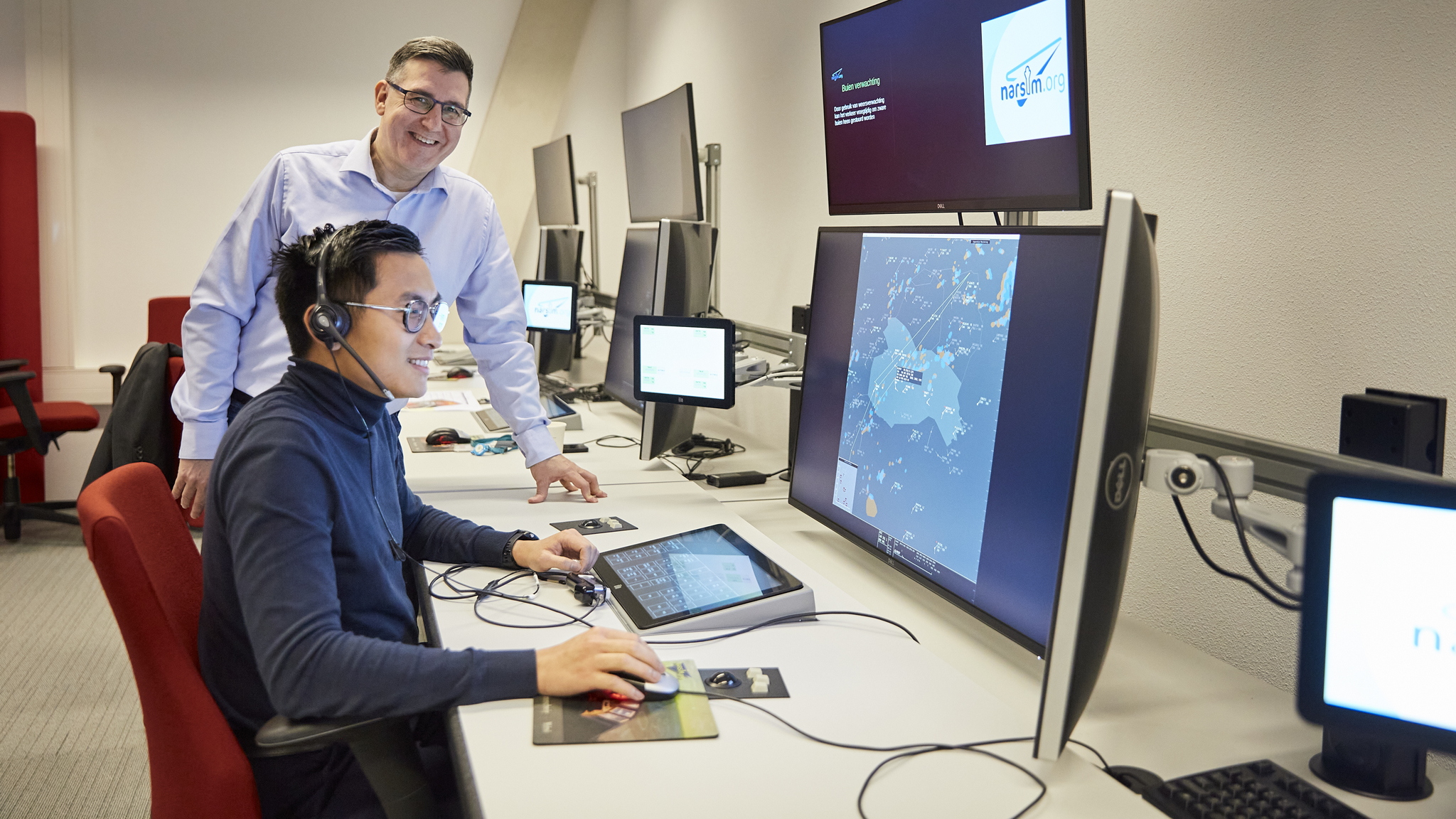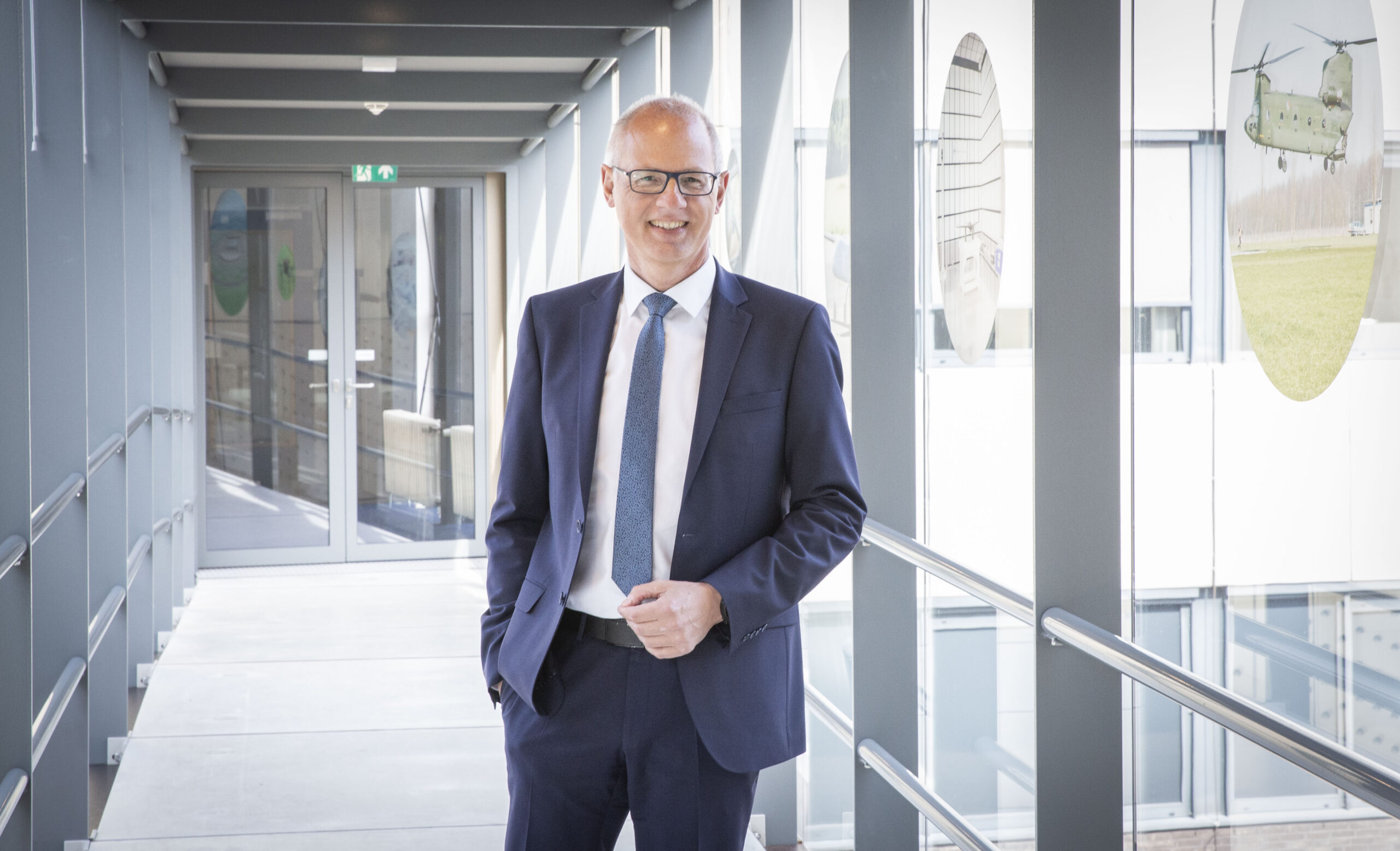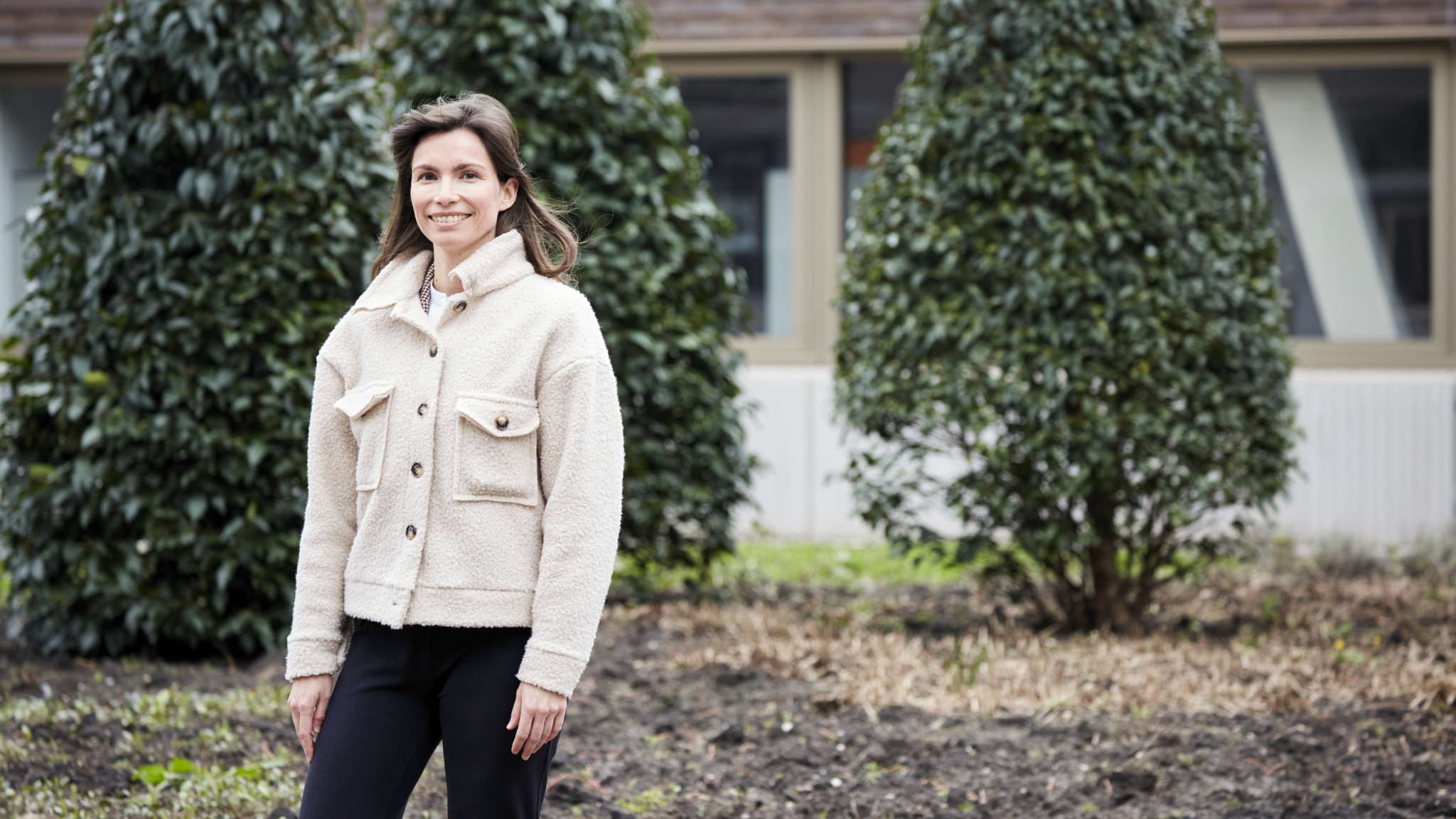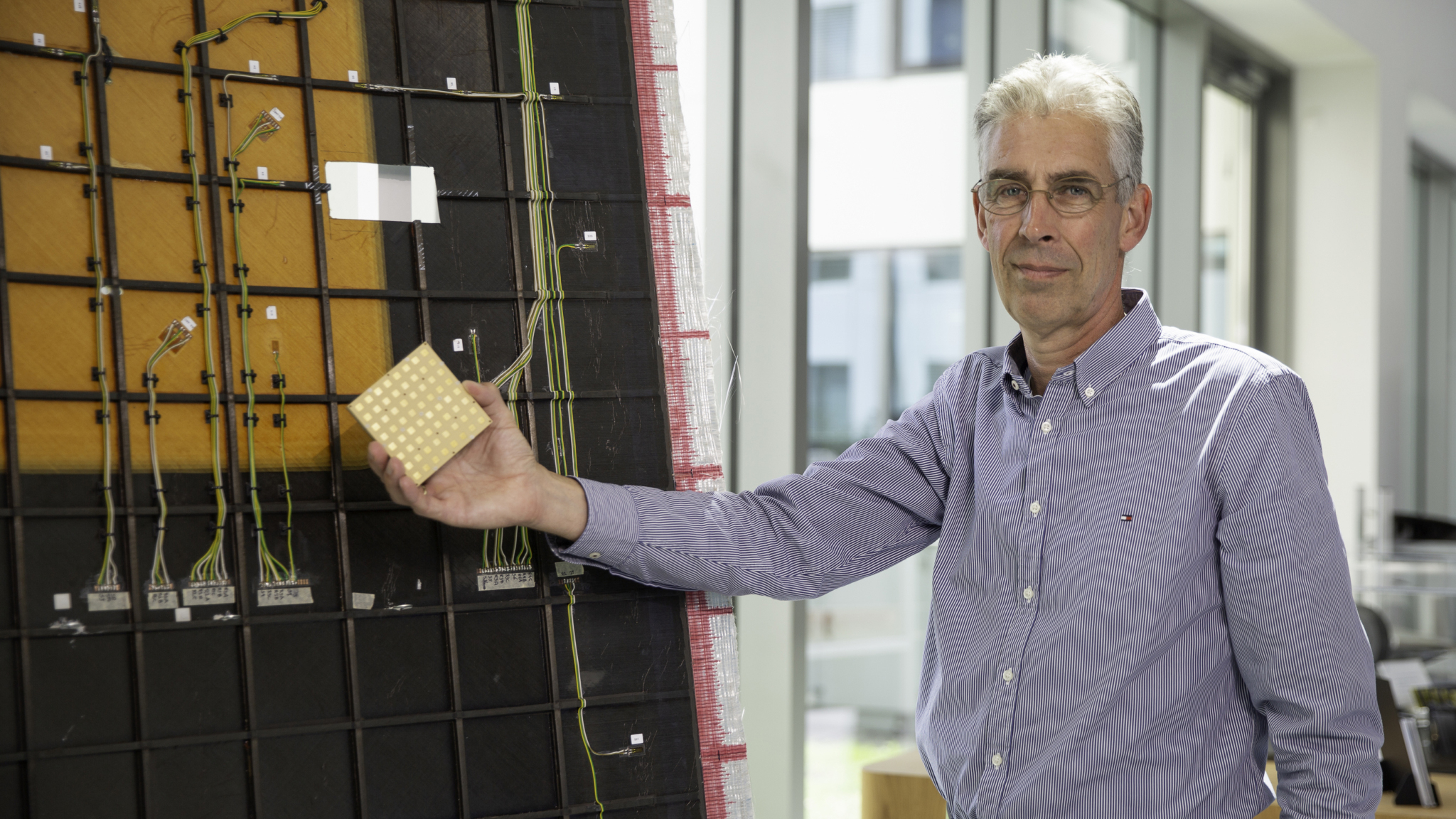Hoe een natuurkundige helpt het steeds drukkere luchtruim te organiseren
Het luchtruim staat de komende jaren voor grote veranderingen. Het wordt steeds drukker in de lucht, en er komen steeds meer verschillende soorten verkeer bij elkaar. De grote vraag is dus: hoe houd je al die verschillende verkeersstromen – drones, vliegtuigen; bemand en onbemand; hoge- en lage snelheid – veilig uit elkaar?
“We willen het luchtruim zo flexibel mogelijk inrichten voor verschillende gebruikers”, vertelt Jürgen Teutsch, senior R&D Engineer op de afdeling Air Traffic Management en Airport bij het Koninklijk Nederlands Lucht- en Ruimtevaartcentrum (NLR). Deze afdeling houdt zich bezig met luchtverkeersleiding en de organisatiestructuur van het luchtruim.
De organisatie van het lagere luchtruim verloopt op dit moment via visual flight rules. Simpel gezegd: zodra de piloten een ander toestel zien, proberen ze daar afstand van te houden. In een drukker luchtruim waarin meer vluchten plaatsvinden die worden uitgevoerd door een divers scala aan toestellen, is dat niet langer voldoende. Er is dus werk aan de winkel.
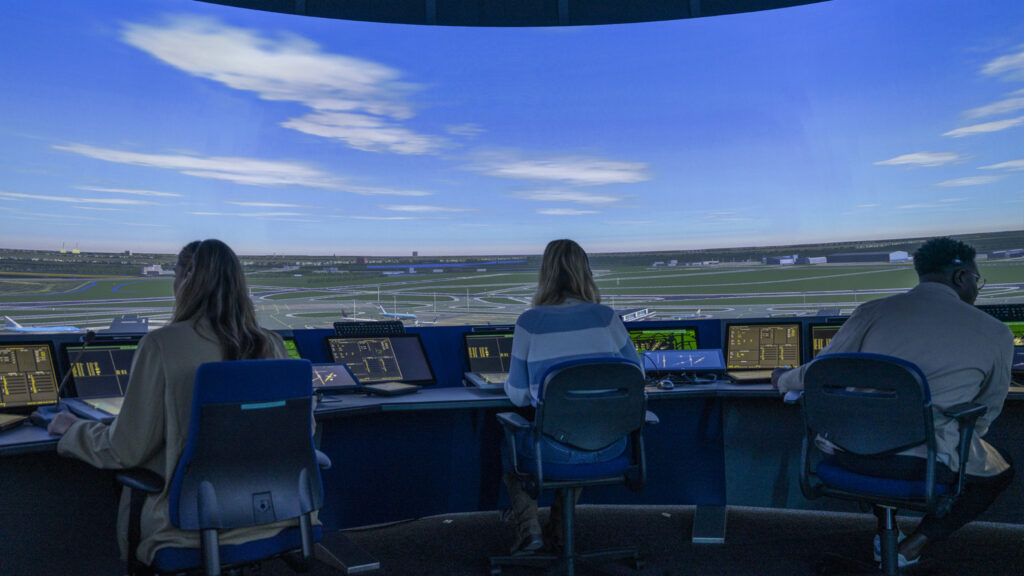
‘We gaan naar nieuwe vormen van vliegvervoer toe’
Als voorbeeld noemt de onderzoeker urban air mobility. Naast drones, horen daar ook bemande elektrische vertical take-off and landing (eVTOL) voertuigen bij. Oftewel: een elektrische helikopter die als airtaxi wordt gebruikt. Dat klinkt misschien als een ver-van-mijn-bed-show, maar in de Verenigde Staten staan een aantal bedrijven op het punt om op te productie van deze voertuigen op te schalen. “Deze bedrijven hebben allemaal een visie: certificering van hun airtaxi, het opschalen van de productie en het inpassen van nieuwe regelgeving. Als er in New York straks honderd van dit soort toestellen vliegen, dan wordt het snel druk in het luchtruim. Ook in Nederland gaan we naar nieuwe vormen van vliegvervoer – en dus een drukker luchtruim – toe. We moeten dus nadenken over de organisatie daarvan.”
Het werk van Jürgen focust op het valideren van concepten voor het gebruik van nieuwe technologie en systemen in verschillende omgevingen. “Denk bijvoorbeeld aan de integratie van drones die op grote afstand geïntegreerd moeten worden in de arrival flows van een regionale luchthaven. Wij kunnen dit concept testen en valideren in een zeer realistische simulatieomgeving.”
“Met technologie maken we het onzichtbare zichtbaar”
Een fascinatie voor het onbekende
Jürgens fascinatie voor de luchtvaart gaat terug naar begin jaren zeventig, als er voor het eerst een ruimtevaartuig in een baan om Mars vliegt. Jürgen kan dan net lezen en verslindt alle informatie die hij erover kan vinden. Die fascinatie is nooit meer weggegaan.
Na zijn master Ruimtevaarttechniek en werktuigbouwkunde gaat hij aan de slag als onderzoeker aan de faculteit Luchtvaart- en Ruimtevaarttechniek van TU Delft. Na een paar omwegen, komt hij bij Airbus terecht als systeembeheerder. Al snel weet hij: ik moet terug naar het onderzoek. Als hij een advertentie van NLR voorbij ziet komen, pakt hij meteen de telefoon. Zijn enthousiasme vindt gehoor. In 2000 verruilt Jürgen zijn geboorteland definitief voor Nederland.
Het onzichtbare zichtbaar maken
Een kleine 25 jaar verder, werkt Jürgen nog steeds bij NLR. Naast het organiseren van het luchtruim, is ook het verbeteren van de werkomstandigheden van luchtverkeersleiders met nieuwe technologie een belangrijk onderdeel van zijn onderzoek. Daarin speelt onder andere augmented reality een grote rol.
“Stel je bent verkeersleider en staat op de torenvloer. Je moet de aandacht verdelen tussen kijken wat er op de luchthaven gebeurt, en de digitale informatie die binnenkomt. Dan zou het heel efficiënt zijn als je met een HoloLens [een augmented reality-headset, red.] extra informatie of zelfs camerabeelden geprojecteerd ziet, terwijl je naar buiten kijkt. Met de headset kan een verkeersleider ook beelden zien van plekken die niet goed zichtbaar zijn vanuit de toren. Met technologie maken we het onzichtbare zichtbaar.”
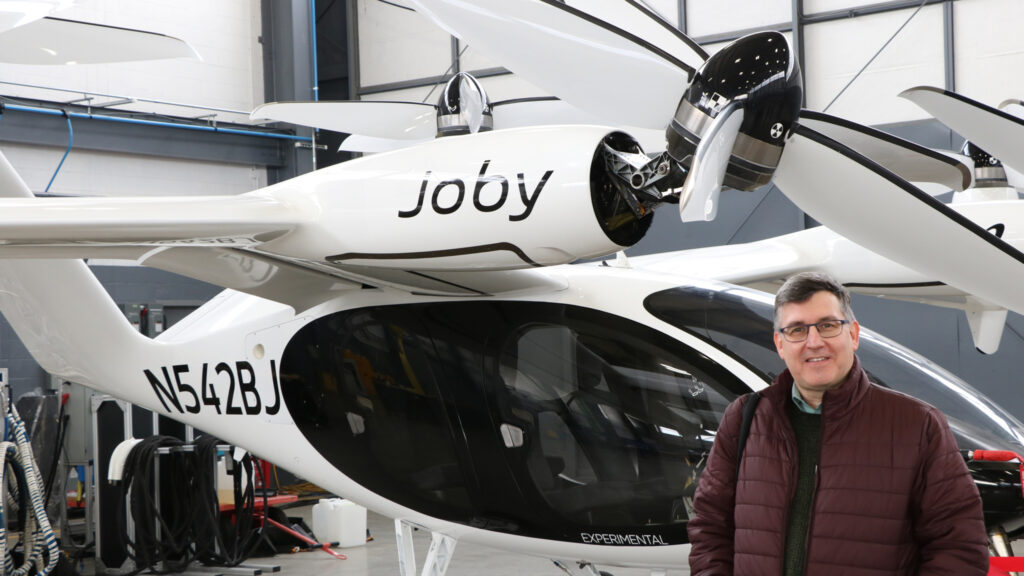
Ook hielp Jürgen een tool voor Go-Around Detection ontwikkelen. Een kort lesje vliegjargon: een go-around situatie (‘doorstart’) ontstaat wanneer een piloot niet kan landen. Bijvoorbeeld omdat de landingsbaan nog bezet is, of door een sterke zijwind. In een ideale situatie geeft de piloot dit direct door aan de verkeersleiding, maar in de praktijk is dat vaak niet het geval, omdat het om een acute, vaak stressvolle situatie gaat. “In zo’n doorstart kan een vliegtuig makkelijk terechtkomen op de vluchtroute van een vertrekkend vliegtuig. Dat kan tot uiterst gevaarlijke situaties leiden en levert sowieso veel vertraging op”, legt hij uit.
Netherlands Air Traffic Control (LVNL) asked NLR to develop a tool that automatically alerts air traffic controllers about a go-around situation. Together with two colleagues, Jürgen wrote an algorithm that compares the nominal approach path against the positions that are actually reported. If the two differ in certain characteristic ways, there is good reason to assume that the aircraft is about to carry out a go-around procedure. In that case, the air traffic controller is alerted immediately. Schiphol started using the tool in 2016.
Air traffic control in space
In addition to his work on organising airspace properly, Jürgen’s work at NLR also covers developing analogous strategies for space flight. The zone between 18 kilometres (where air traffic control’s responsibilities stop) and 100 kilometres above the Earth’s surface (where space is deemed to begin) is getting busier and busier too. “The differences in speed in air traffic here are enormous. Weather balloons move very slowly, for instance, whereas hypersonic flight is hugely fast. There is little or no control in that zone at the moment but the ever-increasing numbers of flight movements there mean that this will have to change. We’re also thinking about how we can arrange the transition from the airspace that is controlled currently to these higher regions.”
For this particular researcher, taking part in this project closes the loop nicely. He will be able to be involved on a daily basis with aspects of space flight – something that he was only able to fantasise about as a four-year-old boy. “Nobody knows yet how we’re going to have to organise airspace and space flight in five or ten years’ time. It’s all unexplored territory – nobody has a manual that says how we ought to do it. To me, that’s a fantastic challenge.”
